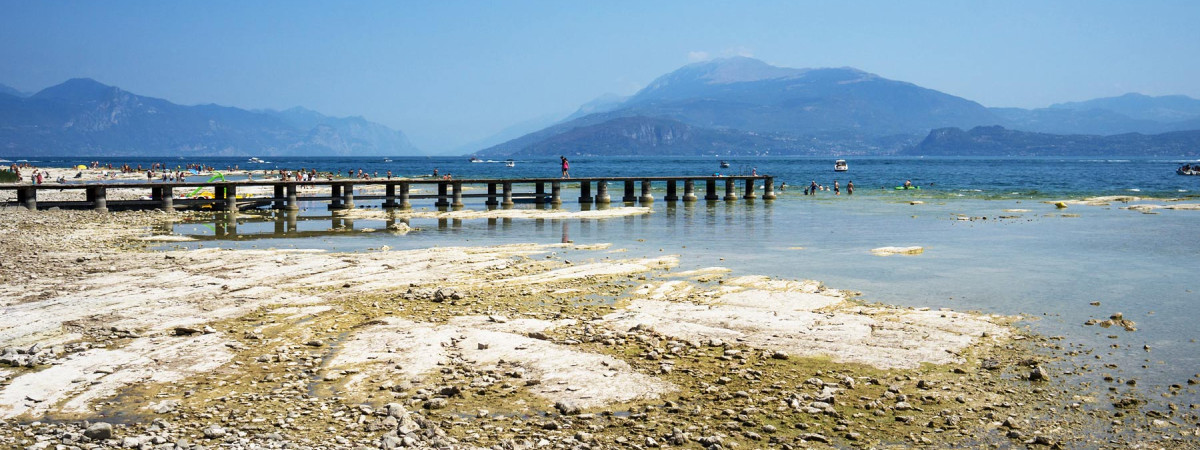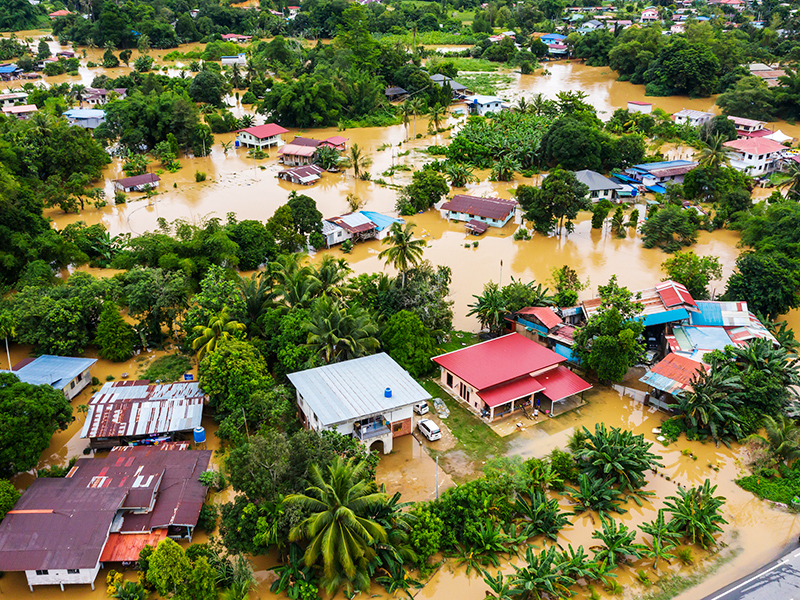
Authors
-
Anna Iles
Former Associate Director, Transformation, BSR
-
Deb Gallagher
Former Director, Climate Change, BSR
-
Todd Jones
Former Associate, Energy, Extractives, Transport, and Industrials, BSR
In The Risk to Insurance, we discussed how climate change has made insurance industry modeling practices far more difficult to rely upon. Now, we dive into the climate justice risks surrounding the insurance industry’s ability to protect land-based assets and livelihoods, and we urge business to seek opportunities across their value chains to build inclusive resilience through risk mitigation and adaptation.
Climate impacts are raising the specter of uninsurability, giving new prominence to the role of insurance in driving climate mitigation. In 2022, the world saw an estimated US$313 billion global economic loss due to natural disasters, thanks in large part to historic and persistent climate change events. From flooding in Pakistan that displaced 7 million people to droughts in Europe, countries around the globe saw the impacts of climate events on their assets, of which only US$132 billion was covered by insurance.
Those most vulnerable to climate impacts are severely underserved by insurance options, exposing their assets, communities, and livelihoods to great risk. The insurance penetration rate is below 3 percent in Africa—one of the most vulnerable continents to climate change. Here, an increase in catastrophic events—from South African floods to Algerian wildfires—brings both endemic poverty and high exposure of key economic sectors, such as food and agriculture, to climate risk. The IPCC report projects reductions in yield could reach 50 percent by 2020, but small-scale farmers face a dearth of low-income insurance options.
In the US, climate risk has reduced insurance options across the board: hurricanes in Florida have seen large providers leave the state, while rampant fraud has pushed up home insurance premiums to the highest in the nation. Laurie Schoeman, Director of Climate and Sustainability at Enterprise Community Investment, sounds the alarm:
“When carriers step out, there’s less variety and the prices go up. You get stranded assets where households, families, and communities lose their economic legacy—and for low-income communities that’s an extreme impact.”
This could lead to an avalanche of economic displacement: communities lose residents, businesses, and livelihoods—and with them the tax benefits that are passed onto schools, services, and infrastructure. Meanwhile, more insurable locations can come under strain with the influx of those forced to relocate—that is, climate refugees.
This risk is further compounded by the need for reinsurance, which is when an insurance company purchases insurance to protect itself from the risk of loss. As more insurance companies struggle, the availability of reinsurance for those companies is also reduced as fewer organizations are willing to risk reinsuring languishing entities. AI adoption across the insurance industry could help, improving risk analytics to reduce costs and increase the capacity of reinsurance.
Cat Bonds are rising in response: these high-yield debt instruments are designed to raise money for insurance issuers, releasing money from the bond only in the event of a natural disaster.
A Three-Fold Solution
Several programs have been created to better protect homeowners and developing countries from catastrophic weather events caused by climate change. The Caribbean Catastrophe Risk Insurance Facility Segregated Portfolio Company (CCRIF) utilizes insurance-linked securities (ILS) to create a multi-country risk pool that acts as an insurer for many Caribbean countries in the event of any catastrophic weather event. Payouts have included stabilizing drinking water plants; repairing critical infrastructure such as roads, bridges, and schools as well as homes; and support for the agricultural sector. However, programs like these are remedial, rather than preventative, and rely heavily on the handouts of developed countries.
The perils require a three-fold approach to mitigating and managing the risks, combining a push for secure land tenure, innovative insurance options that incorporate mitigation, and business leadership.
Secure land tenure is widely recognized as a key to climate change mitigation and adaptation. It ensures local landowners can invest in land-based solutions from carbon sequestration to flood management, improving their resilience to climate impacts and thereby their insurability, protecting both frontline communities and their livelihoods. Tenure also enables investment in long-term solutions to protect land in critical geographies from degradation. Businesses and insurers can join in advocacy and action to respect land rights and extend secure land tenure—as a foundation for pursuing insurance solutions and risk mitigation strategies. For instance, Coca-Cola and Illovo Sugar Africa have joined with communities and traditional leadership to support the development of improved land registration systems in Malawi to support smallholder farmers in sugar supply chains.
Effective insurance options to support resilient communities need to be affordable, accessible, and designed to promote and enable mitigation efforts. One model is the California Earthquake Authority, which offers insurance premium discounts to homes retrofitted to better withstand earthquakes and offers support to help homeowners make changes to qualify—equivalents are needed for climate risks. A less proactive but increasingly prominent solution is parametric insurance, which insures policyholders against the occurrence of a specific event at a certain magnitude (such as a specific flood level). The Munich Climate Insurance Initiative advocates for solutions that combine parametric insurance and climate mitigation support with disaster risk financing strategies, including gender-sensitive approaches, and encourages collaboration between social and climate protections. Risk reductions bring a moral hazard, though: they might incentivize rebuilding only to expose communities to chronic and growing risk, where in fact an equitable and inclusive approach to relocation is required. Businesses have a responsibility to engage communities in their value chain in co-creating long-term transition plans.
Citizens are exposed to both direct climate impacts for land and property as well as indirect ones, such as impacts on energy costs. Uruguay has adopted climate insurance to protect consumers from electricity rate hikes if its hydraulic power supply is hit by drought, causing it to fall back on expensive fossil fuels. In the long term, this also protects the economy while it seeks to scale renewables.
While states are wise to explore protections, global executive leadership is also needed to help engage, guide, and protect both industry and citizens. As concerns grow around land-based insurance and its potential to impact homeowners, businesses, and land-based livelihoods, it is important that business step up in these ways:
- Identify at-risk communities in their value chains, particularly those dependent on land-based livelihoods such as food and agriculture.
- Understand the needs of at-risk communities and co-create solutions with them to promote land tenure.
- Advocate for insurance discounts for those who actively mitigate against extreme climate change events.
- Advocate for insurance, mitigation, and transition options for those unprotected by national programs.
- Advocate for federal laws on disclosures for land transactions in high climate risk areas for floods, fires, hurricanes, and drought, ensuring that buyers are informed and acknowledge the risks.
BSR’s latest sustainability insights and events straight to your inbox.
Topics
Let’s talk about how BSR can help you to transform your business and achieve your sustainability goals.







